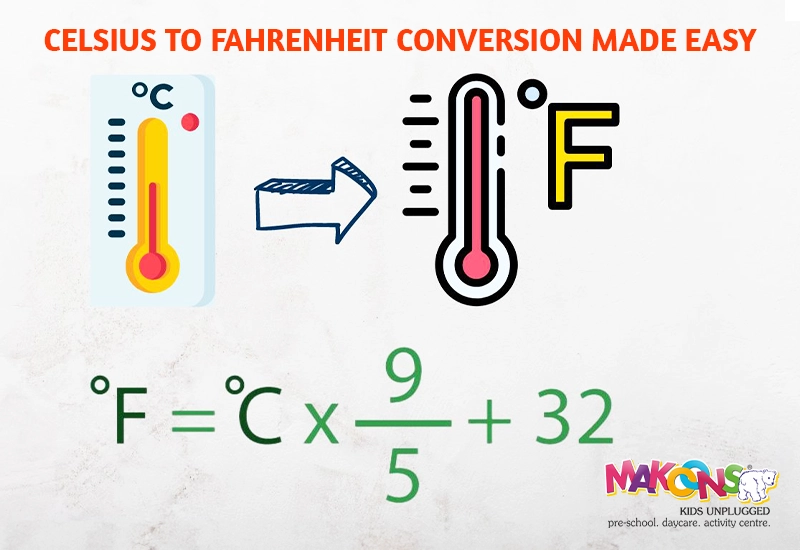
A Quick Guide for Students
Ever scroll past a weather update from another country and go…
“Umm… what even is 25°C? Like, do I wear a hoodie, or am I about to melt?”
Yeah. Been there.
Whether you’re stuck on a science worksheet, prepping for that math quiz your teacher definitely warned you about, or just trying to figure out if it’s tank top or jacket weather in Paris — knowing how to convert Celsius to Fahrenheit is actually pretty useful.
And if formulas make your head spin?
Chill. Seriously.
This little guide’s here to make it make sense — minus the boring stuff.
Let’s break it down, student-style.
🧠 Why Even Bother With Temperature Conversion?
Okay, here’s the deal:
Most of the world uses Celsius.
The U.S.? Still rocking Fahrenheit.
(Why? Honestly, nobody really knows… they just are.)
So if you ever:
Read international weather updates
Cook something from an American food blog
Plan to travel or study abroad
Chat with your cousin in New York who swears it’s “a crisp 60 degrees”
…you’ll need to convert temps. No way around it.
Also? Teachers love tossing temp conversions into science exams. Knowing how to do it quickly = extra brownie points.
🧮 Here’s the Formula (But Simpler Than It Looks)
Don’t worry. You don’t need to memorize anything scary.
The formula is:
°F = (°C × 9/5) + 32
That’s it. Just a little multiply, divide, add — boom.
Example:
For illustration, suppose the temperature outside is 30°C. In Fahrenheit, what is that? Step 1: 30 × 9 = 270 Step 2: 270 ÷ 5 = 54 Step 3: 86°F (54 + 32)
🎉 Done. It’s that simple.
🔢 No-Math? No Problem — Here’s Your Quick-Check Table
Sometimes you just… don’t feel like calculating. Fair.
This is a helpful cheat sheet to have on hand:
Celsius (°C) Fahrenheit (°F)
– The freezing point is between 0°C and 32°F.
-10°C to 50°F to 20°C to 68°F (cool breeze)
– Comfortable: 25°C to 77°F 30°C (86°F) (warming up)
-Body temperature: 37°C 98.6°F 40°C to 104°F (hot!)
-Boiling water at 100°C and 212°F
Screenshot it. Print it. Stick it in your notebook.
Or make it your phone lockscreen if you’re feeling extra.
💡 Real-Life Student Tips for Temperature Conversions
Let’s make this even easier. Here are some tips straight from students who’ve been there:
✅ Tip 1: Don’t Just Memorize — Get It
You’re not a robot. Don’t just cram the formula.
Understand this:
0°C = 32°F
Every 1°C is 1.8°F more (which is where that 9/5 comes from)
Once that clicks, the formula actually makes sense.
✅ Tip 2: Try the Lazy Math Shortcut
Need a fast guesstimate? Use this trick:
°F ≈ (°C × 2) + 30
It’s not perfect, but super close.
Example:
20°C × 2 = 40 → 40 + 30 = 70°F
(Real answer is 68°F. Close enough!)
✅ Tip 3: Make Flashcards (Yeah, Old School — But It Works)
Just a few basics:
Freezing: 0°C = 32°F
Boiling: 100°C = 212°F
Room temp: ~22°C
Body temp: 37°C = 98.6°F
Flip through ‘em when you’re bored or on the bus.
✅ Tip 4: Use Real Life to Practice
Heard someone on the news say “It’s 30°C today in Mumbai”? Pause. Convert it.
Reading a recipe that says “Bake at 180°C”?
Boom — time to do a quick calculation.
Connecting it to stuff around you makes it stick way faster.
✅ Tip 5: Make a Rhyme (Silly Works!)
Try this one:
“Times 9, divide by 5,
Then add 32 to come alive!”
Or make up your own. Rhymes = memory magic.
😬 Watch Out! These Mistakes Trip People Up All the Time
Even smart students mess these up:
🚫 Adding 32 first — Nope. Multiply and divide before you add.
🚫 Using 5/9 instead of 9/5 — Easy to mix up, but totally changes the answer.
🚫 Forgetting what you’re converting — Celsius or Fahrenheit? Double-check the question.
Go slow. Check your units. You’ll save yourself silly mistakes.
🔁 Bonus: What If You Need to Go Backwards?
Not a trouble. Simply flip the following formula if you need to convert from Fahrenheit to Celsius: °C = (°F − 32) × 5/9 As an illustration, Converting 77°F to Celsius First step: 77 minus 32 equals 45 Phase 2: 45 × 5 = 225 Step 3: 25°C = 225 ÷ 9
Nice and clean. Works both ways.
Read More – Prime and Composite Numbers
🎯 Final Thoughts
Here’s the real takeaway:
Temperature conversion isn’t about memorizing formulas.
It’s about understanding how two different systems measure the same thing — and being able to move between them when you need to.
Use the formula when you have time.
Use the shortcut when you don’t.
If you want the answer right away, use the table. It becomes easier the more you use it. Really. You won’t have to guess the next time you see 25°C on your weather app. You’ll be aware. 😎 Go ahead and convert like a pro. You’re capable.
